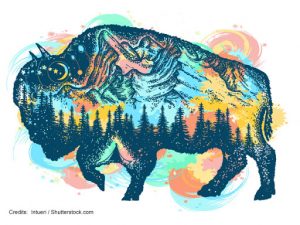Hey everyone!
First off, I’d like to apologize for the lateness of this post and the one following it. I received some difficult news that I have had a hard time adjusting to. As someone who is usually punctual, I am doing my best to get back on track despite this setback. I felt this was important to disclose, especially with the end of term online conference coming up.
Without further delay, I have chosen question #1 to answer in this blog post. For convenience, here is the question itself:
1) In his article, “Godzilla vs. Post-Colonial,” King discusses Robinson’s collection of stories. King explains that while the stories are written in English, “the patterns, metaphors, structures as well as the themes and characters come primarily from oral literature.” More than this, Robinson, he says “develops what we might want to call an oral syntax that defeats reader’s efforts to read the stories silently to themselves, a syntax that encourages readers to read aloud” and in so doing, “recreating at once the storyteller and the performance” (186). Read “Coyote Makes a Deal with King of England”, in Living by Stories. Read it silently, read it out loud, read it to a friend, and have a friend read it to you. See if you can discover how this oral syntax works to shape meaning for the story by shaping your reading and listening of the story. Write a blog about this reading/listening experience that provides references to both King;s article and Robinson’s s story.

An illustration of the oral literature tradition.
When reading “Coyote Makes a Deal with the King of England” silently to myself, I was very aware that because of King’s explanations and statement about how the stories encourage reading aloud that my mind was already considering it. This made me wonder about if I had not been prompted by King’s statement, would I still feel the same? I suppose I’ll never know as I never experienced otherwise, however it is an interesting thought to remark upon and make note of. I also do believe that having the predisposition of encouragement for reading aloud may have lead to a further inclination towards my opinion on the subject.
After reading silently to myself I read it aloud twice. Upon reading it aloud I felt that yes, it took on a much livelier state. I found myself distinguishing character’s voices and giving them life through moving my body in a way that I’d imagine they might have. This is something I do no matter the story I am telling though, so I am not sure what that really says about me. It became a bit like a game for me, as I looked back at stories I’d performed for “Vancouver Story Slam” to see if they carried any similar qualities to this piece. I notices that when a story is written to be spoken aloud that the narrative slope is steeper and that there is usually a heavier amount of dialogue. This helps to anchor the audience, to immerse them in the story.
Then, I read it to a friend. Having only rehearsed twice by myself, I felt the same ball of nervous excitement in the pit of my stomach as I do when I perform. I know from experience that when used properly, this feeling can elevate a story. So, I did what I always do… I used it to enhance the performance and make it bigger than in the rehearsal. All the characters spoke and moved as separate beings. I did my best to channel them, even though it felt like I had just met them. It was an exhilarating experience and I could really feel that I was grasping it much better this way. This made it clear to me that even without being aware that it was meant to be read aloud that the story was part of an oral tradition.
Finally, my friend read it out loud to me. As they had only previously heard it from me and didn’t have time to read it silently to themselves, their performance captured a newfound spontaneity. This aspect added a whole new layer to the story, complete with a few uncertain pauses and encouragement from myself to continue. My friend’s confidence in their ability to tell an unfamiliar story out loud continued to build with every sentence. By the end, they too were giving the characters individual voices and physical motions. This story made a storyteller out of them, I’d say. That’s the power of oral literature.
Biography:
King, Thomas. “Godzilla vs. Post-Colonial.” Unhomely States: Theorizing English-Canadian Postcolonialism. Peterbough, ON: Broadview, 2004. 183- 190. Web. 01 March 2020.
Robinson, Harry. Living by Stories: a Journey of Landscape and Memory. Ed. Wendy Wickwire. Vancouver: Talonbooks, 2005. Print.